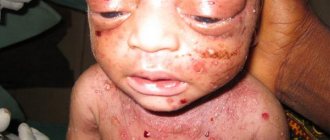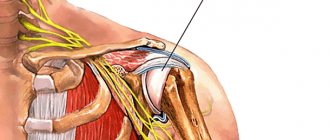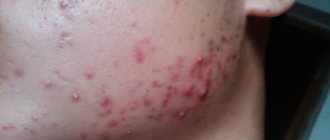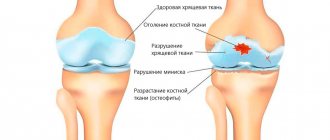Based on their origin, the following types of syphilis are distinguished:
- Congenital - infection of a child from the mother occurs in utero or during childbirth. Often, infected mothers experience miscarriage or intrauterine death of the fetus, since Treponema pallidum toxins negatively affect its development. If an infected child survives after birth, then according to statistics he dies before the age of 6 months;
- Acquired - infection occurred as a result of sexual intercourse, blood transfusion or breastfeeding.
According to the timing of occurrence, syphilis is divided into early and late.
There are the following stages of syphilis:
- Primary - occurs when infected with Treponema pallidum, manifested by skin lesions at the site of its penetration. It is characterized by the appearance of hard chancre (primary syphiloma) on the skin or mucous membrane.
- Secondary - occurs approximately 3-4 months after infection and can last for several years. It is characterized by the spread of the syphilis pathogen throughout the body through the lymph nodes, blood vessels and internal organs;
- Tertiary - develops in patients who have not undergone treatment at all. It is characterized by the formation of granulomas in the skin, bones, mucous membranes and internal organs. Granulomas compress and destroy tissue, which can subsequently lead to death.
Causes of the disease
There is only one reason for the occurrence of syphilis - infection with Treponema pallidum through contact of an injured area of skin and mucous membrane with chancre or syphilitic gum. Through microtraumas on the skin of the groin area and torso, the mucous membrane of the oral cavity, and genital organs, the bacterium enters the lymph nodes and then into the systemic bloodstream.
The main routes of transmission of the disease:
- Sexual intercourse - any type of unprotected sex with a sick person;
- The everyday route is extremely rare (due to the extremely poor survival rate of treponema in an alien environment), possible through violation of hygiene rules (for example, using one toothbrush);
- Blood transfusion route - infection through blood transfusion;
- Professional path - as a result of violation of safety regulations or accidental injury of medical workers when working with patients with syphilis;
- Transplacental route - transmission of syphilis from mother to child during pregnancy through the placenta.
Transmission routes
Syphilis is classified as a sexually transmitted disease (STD). Transmission is ensured through traditional sexual intercourse, anal and oral sex, even if the carrier has syphilis in the incubation phase.
After the incubation period, a small ulcer will appear at the site where the treponema pallidum bacterium passes, which will only grow if measures are not taken to treat the disease.
When caring for a patient, infection is possible through contact with his personal belongings and the carrier himself.
With this method of infection, signs of syphilis will initially appear on the skin of the legs and arms, and after chancre will form on the genitals.
This sexually transmitted disease can be transmitted, like everything else, through blood. When reusing syringes, razors and other personal hygiene items.
Symptoms of syphilis
The peculiarity of the symptoms of syphilis is that the disease has a fairly long incubation period, and the course of the primary stage is asymptomatic and does not cause concern in patients. Another danger of the disease is its undulating course, with alternating periods of exacerbation and subsidence of the symptoms of the disease. Therefore, it is worth paying attention to any manifestations of the disease, even seemingly insignificant at first glance.
Primary syphilis
With primary syphilis, a chancre is formed at the site of penetration of the pathogen - a spot that turns over time into a papule, and then into erosion. The disease manifests itself as follows:
- bright red ulcers appear on the mucous membranes, with a dense bottom and clear boundaries;
- the appearance of formations is not accompanied by pain (unless the chancre is located in the mouth);
- swelling is possible in places where bacteria are introduced;
- chancre in the anal area forms in folds, looks like an ulcer with cracks, and causes pain during defecation;
- There is an increase in regional lymph nodes, while they are painless on palpation.
Secondary syphilis
Symptoms of secondary syphilis:
- skin rash (erythematous, papular, pustular), which fades over time;
- absence of disturbances in general well-being;
- formations on the skin do not merge;
- hair loss may begin;
- disruptions to the functioning of internal organs are likely.
Tertiary syphilis
Symptoms:
- bumps on the skin with thick liquid inside, which increase over time, and over time an ulcer and scar form in their place;
- nodes called gummas are found deep in the thickness of the skin;
- internal organs are damaged (visceral syphilis develops).
Hidden syphilis
The pathogen was detected in the taken biomaterial, but there were no external manifestations of the disease.
Features of the course of the disease depending on the gender of the patient
Male syphilis
The patient may not be aware of the disease; rashes appear at the affected areas, which disappear on their own after some time. However, this is only a sign of progressive syphilis. The first symptoms of syphilis:
- Swelling and hardening of the foreskin;
- Small ulcers and erosions on the penis, in the urethra and anus - chancre.
After the onset of ulcers, a week later the following symptoms appear:
- lymph nodes enlarge;
- The temperature rises.
Often, overall well-being is not affected, so men rarely seek help.
The appearance of a rash is a sign of secondary syphilis, which means the beginning of destructive processes in the body. Treatment should be started immediately, since the therapy will be ineffective, and the damage to internal organs is very significant.
Female syphilis
Signs of syphilis appear after 14 days. The first stage is accompanied by symptoms:
- Ulcers on the labia, vaginal mucosa;
- General weakness and malaise;
- Enlarged lymph nodes in the groin.
The incubation period of the disease is approximately 3-6 weeks; a painful ulcer up to 2 cm in diameter, with a smooth and shiny bottom, forms at the site of contact with the chancre. A week after the chancre hardens, the regional lymph nodes enlarge. The difficulty of self-diagnosis in women is that they often become infected with the vaginal mucosa. Plus, a secondarily infected ulcer is accompanied by swelling and pus is separated from its surface. Treponema pallidum is difficult to identify in this discharge, which is mistakenly taken for the absence of syphilis.
Prevention
Standard preventive measures include avoiding casual sex, using condoms, and to prevent occupational syphilis, wearing disposable latex gloves before examination, manipulation and surgery.
Condoms are not 100% protection - the chancre can be located extragenitally (pubis, perineum), and with secondary syphilis, a “necklace of Venus” is formed on the skin. In these cases, the infection from syphilis is transmitted by contact to the partner’s skin.
With syphilis, lifelong immunity is not formed. Having successfully recovered from this disease, you can become infected and get sick again. In this case, the disease will be just as severe. Therefore, there are no vaccinations against syphilis, and there cannot be.
Signs of syphilis
Syphilis infection can be suspected by the appearance of chancre:
- In men, the glans penis and foreskin are most often affected;
- In women, the labia area, mucous membrane of the vagina and cervix are susceptible to infection.
Recently, primary syphilis is increasingly observed in the form of an extragenital (outside the genital organs) chancre: on the skin and mucous membrane of the anus, on the abdomen, thighs, pubis, fingers, mucous membranes of the lips, tongue and oral cavity.
The chancre looks like a round, saucer-shaped fleshy-red erosion with a diameter of up to 1 cm. The separated serous discharge gives the surface of the formation a varnished shine. Typically, chancre is characterized by a dense infiltrate at the base. But modern venereological practice notes cases when no pronounced compaction is detected. Not often, but sometimes there is pain in the chancre area. This type of chancre heals without leaving any traces.
There are also ulcerative forms of chancroid - they have more pronounced edges and a compacted base. Healing of this form of chancre occurs with the formation of a scar.
Atypical forms of manifestations of syphilis:
Indurative edema is swelling in the scrotum, foreskin and labia majora. It is characterized by extremely high density, the inguinal lymph nodes are swollen.
Chancroid-amygdalitis - manifests itself as a unilateral painless enlargement and thickening of the tonsil. It is distinguished from a sore throat or exacerbation of chronic tonsillitis by the absence of inflammatory changes, sore throat and fever. In this case, there is an increase in the cervical and submandibular lymph nodes.
Chancroid felon - common among health workers (gynecologists, urologists, dentists, laboratory technicians, etc.). The chancre is extremely painful with thickening and swelling of the terminal phalanx of one of the fingers. It can be distinguished from other infections by the absence of pronounced redness, the presence of dense infiltration of the affected area and enlargement of nearby lymph nodes.
Attention, abnormal!
After the incubation period, the time comes for the formation of ulcers and, accordingly, the disease enters the first stage.
But, despite the presumptive outcome for each phase, abnormal phenomena on the skin are possible.
Based on this, unexpected manifestations are divided into several categories:
- Damage to skin vessels that occur around syphilitic chancre. This symptom changes the color of the penis, scrotum of men and female genitalia to a darker color with a blue tint. Women are more likely to experience syphilis on the lips. It is often confused with other gynecological inflammatory processes. However, only syphilis is characterized by swelling, which during diagnosis will not show any deviations from the norm, but the person’s lymph nodes will be inflamed.
- Idiopathic syphiloma is an inflammation that causes Treponema pallidum on the three main fingers of the hand. Pieces of skin peel off at the affected areas, which leads to slight blood loss, more similar to a recent moderate burn.
- Syphilitic amygdalitis is an inflammation of the submandibular or cervical tonsil. With this anomaly, the structure of the tonsil itself does not change, only an inflammatory process is present, which makes it difficult to swallow saliva and food. All accompanying symptoms are more reminiscent of a sore throat (fever, pain, pain when swallowing), but in our case, inflammation is present in only one tonsil.
Diagnosis of syphilis
A doctor can make a diagnosis of syphilis based on a combination of medical history, clinical picture and laboratory examination data.
All analyzes and tests for syphilis are divided into two groups:
- Non-treponemal - usually used for mass examinations (qualitative Wasserman RW reaction with cardiolipin antigen);
- Treponemal - RW with treponemal antigen, RIBT. If a person has already suffered syphilis, the results of such tests will be positive for life.
Diagnostic methods
Collection of anamnestic data. In this case, the following factors are important:
- The presence of confirmed syphilis in a sexual partner;
- Casual sexual intercourse without the use of mechanical contraception;
- In the past, rashes in the groin area and/or swollen lymph nodes have been observed.
Clinical examination:
- Examination of the genital organs, skin and oral mucosa;
- Palpation of the lymph nodes - with the disease they increase;
- ECG, ultrasound of the heart and aortography (x-ray of the heart);
- X-ray of bones;
- Rhinoscopy and pharyngoscopy;
- Gastroscopy, ultrasound of the liver;
- X-ray of the lungs;
- Lumbar puncture with examination of cerebrospinal fluid, etc.
Laboratory research:
Treponemal tests:
- Dark-field microscopy;
- Direct immunofluorescence reaction (RIF-Tr) - with this method, a specific antigen-antibody complex is combined with a fluorochrome-labeled immune anti-species serum for subsequent detection of Treponema pallidum using a fluorescent microscope;
- Polymerase chain reaction (PCR) is a laboratory test that allows you to find a small section of specific T. pallidum DNA in the clinical material being studied. This method allows you to effectively detect syphilis in the early stages.
Non-treponemal serological tests are methods for detecting antibodies in blood serum against phospholipids of tissues destroyed by syphilitic infection and membrane lipids of T. pallidum:
- Macroscopic test of rapid plasma reagins (Rapid Plasma Reagins, RPR) - assessment of the results of the reaction with the naked eye using visualizing agents that are part of the antigen-antibody complex. The group of these tests includes the selection reaction for syphilis (SRS), microprecipitation reaction (MPR), rapid diagnosis of syphilis (EDS);
- Microscopic test VDRL (Venereal Disease Research laboratory) - calculation of reaction results using light microscopy. If neurosyphilis is suspected, cerebrospinal fluid is examined using VDRL;
- Quantitative VDRL test;
- Compliment binding reaction (Wassermann reaction) is performed with two antigens: ultrasonic treponemal and cardiolipin.
Treponemal serological tests are necessary to detect antibodies against Treponema pallidum antigens in blood serum:
- Immunofluorescence reaction RIF (FTA);
- Passive hemagglutination reaction RPHA (TPHA);
- Enzyme-linked immunosorbent assay (ELISA);
- Immunoblotting.
Additional diagnostic methods
- neurosyphilis - a study of the cerebrospinal fluid (CSF) is necessary;
- early congenital, late congenital, tertiary syphilis - radiography of the aorta of long tubular bones, sternum, skull bones, joints;
- Acoustic neuritis, syphilitic labyrinthitis - audiological examination (hearing test);
- Optic neuritis, parenchymal keratitis - ophthalmological examination.
All patients with syphilis, in addition to a venereologist, are recommended to be observed by a dermatologist, proctologist, urologist, gynecologist, otolaryngologist, cardiologist, neurologist.
Is this really treatable?
Despite the severe consequences of tertiary syphilis, in the early stages of the disease and in the latent period it is well treated with antibiotics. Treponema pallidum, unlike many other bacteria, still retains very high sensitivity to penicillin and other antibiotics of the penicillin group, so there are usually no problems with treatment. If you are allergic to penicillins, use erythromycin, tetracycline or cephalosporin antibiotics.
Before the discovery of antibiotics, syphilis was historically treated with mercury, bismuth and iodine. These drugs were toxic, ineffective, and such treatment was rarely successful. A real breakthrough in the treatment of syphilis was the discovery in 1908 of salvarsan, an organic arsenic compound. Although it was comparable in toxicity to mercury preparations, it was significantly superior to them in effectiveness, which made the treatment much more successful. Later, less toxic analogues of salvarsan were synthesized - miarsenol and novarsenol, which are sometimes used to treat antibiotic-resistant forms of syphilis today.
Another interesting historical method of treating syphilis is pyrotherapy. Treponema pallidum can reproduce only in a very narrow temperature range - about 37 degrees. When heated to 40–41 degrees, the pathogen already dies. A person can hardly bear such a fever, but it is not fatal. Previously, in order to achieve the required increase in temperature, a patient with syphilis was infected with malaria - the fever it caused led either to a complete cure for syphilis or to a significant slowdown in its development. After this, malaria was treated with quinine.
Currently, pyrotherapy is also used in some cases to treat severe and advanced forms of syphilis, but a special drug, pyrogenal, is used to increase body temperature.
Treatment of syphilis
Treatment for syphilis includes antibacterial therapy, drugs to stimulate the immune system, and restorative medications. Depending on the severity of the disease, treatment can be carried out both in inpatient and outpatient settings.
The duration of treatment depends on many factors and can last from 2 weeks to several months.
After completing the course of treatment, observation by a doctor is necessary to prevent relapse of the disease:
- for seronegative primary syphilis - 1 year;
- for seropositive primary syphilis - 3 years.
The presence of pathogens in biological fluids is monitored by regular RPR testing. If positive results are observed within a year, additional treatment of the disease is indicated.
Syphilis is treated and not treated
Systematic treatment of syphilis currently gives good results, especially when it is started soon after the first signs of the disease appear. Timely and vigorous treatment of syphilis in the mother during pregnancy is the best way to prevent syphilis in the child. But advanced stages of the disease are incurable.
Treatment of syphilis, as well as gonorrhea, should only be carried out by a doctor. It must be remembered that a cure can be achieved only on the condition that the patient accurately follows every doctor’s prescription and carefully carries out the entire course of treatment.
ONLINE REGISTRATION at the DIANA clinic
You can sign up by calling the toll-free phone number 8-800-707-15-60 or filling out the contact form. In this case, we will contact you ourselves.
If you find an error, please select a piece of text and press Ctrl+Enter










